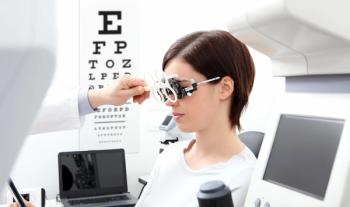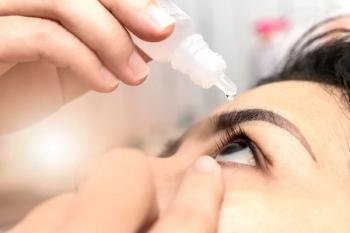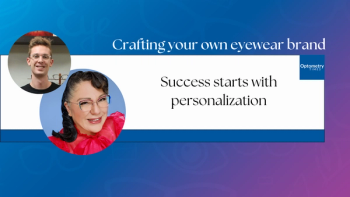
EyeCon 2022: The past, present, and future of contact lens technology
Lyndon Jones, BSc, PhD, DSc, FCAHS, FCOptom, DipCLP, DipOrth, FAAO, FIACLE, FBCLA , shares key takeaways from his EyeCon 2022 presentation, "Advances in presbyopia."
Lyndon Jones, BSc, PhD, DSc, FCAHS, FCOptom, DipCLP, DipOrth, FAAO, FIACLE, FBCLA, talks with Optometry Times' Emily Kaiser to discuss key takeaways from his presentation titled, "Contact lens technology," during EyeCon 2022 held in Marco Island, Flordida.
This transcript has been edited for clarity:
Kaiser:
Hello, I'm Emily Kaiser with Optometry Times. And I'm sitting down with Dr. Lyndon Jones to discuss his presentation on contact lens technology at EyeCon 2022 in Marco Island, Florida. Welcome, Dr. Jones, thank you for taking the time to talk to us.
Jones:
You're very welcome.
Kaiser:
Can you give us a brief overview of your presentation?
Jones:
I can indeed, yeah. So basically, my background is: I'm involved in contact lens research. So what I thought I'd share with people who come to the talk is really kind of two aspects.
The first is to look at, basically, why it is that so many of our contact lens patients complain of contact lens discomfort when they're wearing the lenses. So I'll look at the history behind that and the numbers about why it is that people fail. And then how, as clinicians, we can solve those problems, and what great opportunities now, contact lens companies give us with the technologies that they provide us. So that's gonna be the first half of the talk, very practical, very related to basically reducing contact lens discomfort.
Then the second part of my talk is really about the kind of the more futuristic concepts about how contact lenses are going to be used, that are not really related just to the typical way that we use them to correct vision. And that's going to be related to how we can potentially use contact lenses in the future to look for systemic disease, ocular disease, the potential for contact lenses to act as drug delivery devices—so to treat a variety of diseases, and then the final thing is how we can potentially use contact lenses for educational perspectives.
So really futuristic looking, and where I think the future of contact lenses are going.
Kaiser:
That sounds really, really cool. How should clinicians respond to this information?
Jones:
Well, basically, there's two sections. The first is going to be solving the problems of today. It's going to be how when patients come into your practice today, and they have issues with the comfort of the lenses, what methods we have available to manage that. And the second thing is going to be the more exciting options of tomorrow. So what can we look for for companies to provide us with across the next five to 10 years?
Kaiser:
And what do you hope that optometrist take away from your talk?
Jones:
I hope they take away from the fact that there are great opportunities for contact lenses today and tomorrow. Contact lens has been out for a long time, but basically there's still great opportunities for practitioners to use it to build your practice and to make your practice better.
Newsletter
Want more insights like this? Subscribe to Optometry Times and get clinical pearls and practice tips delivered straight to your inbox.
















































.png)


